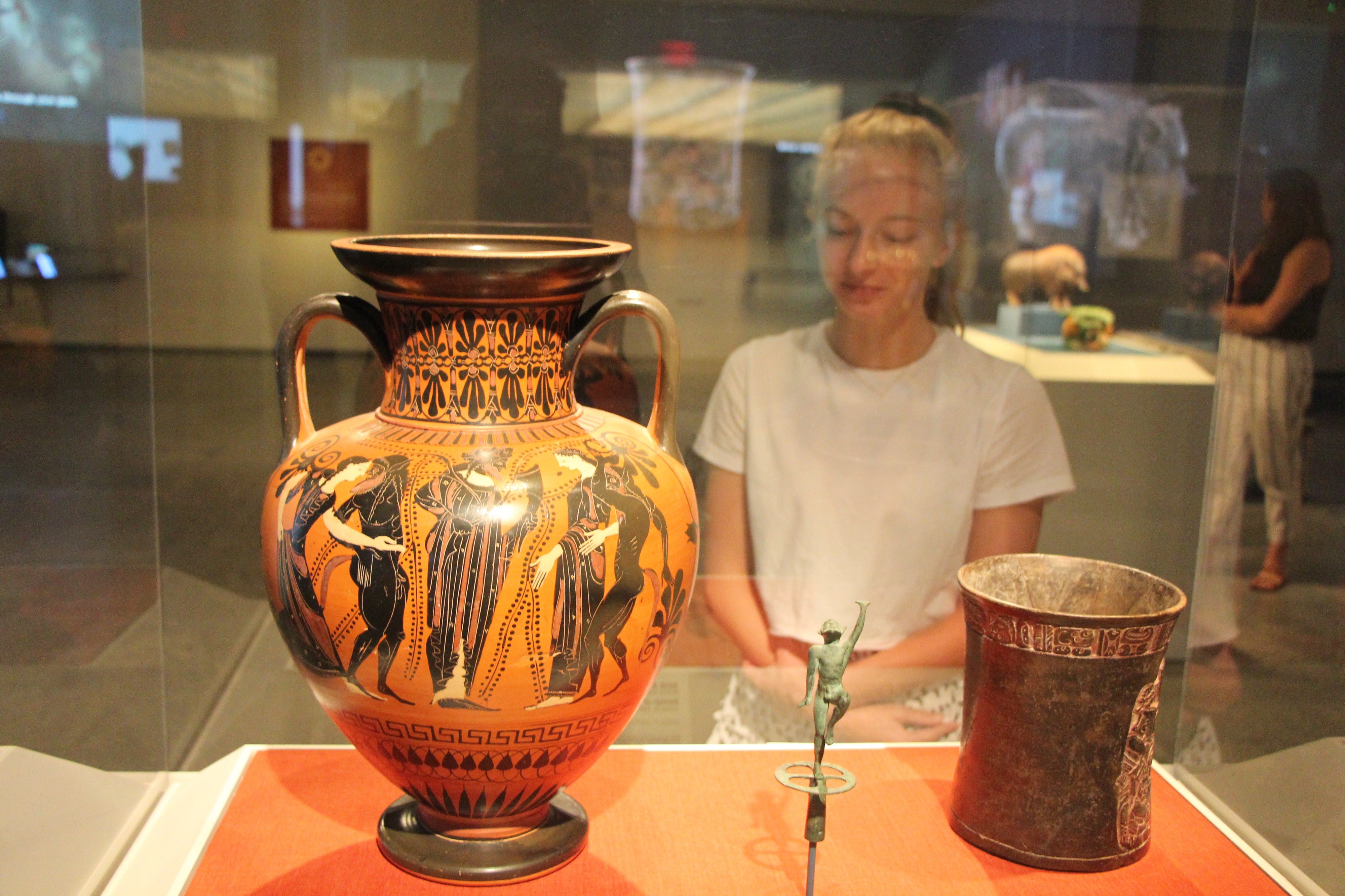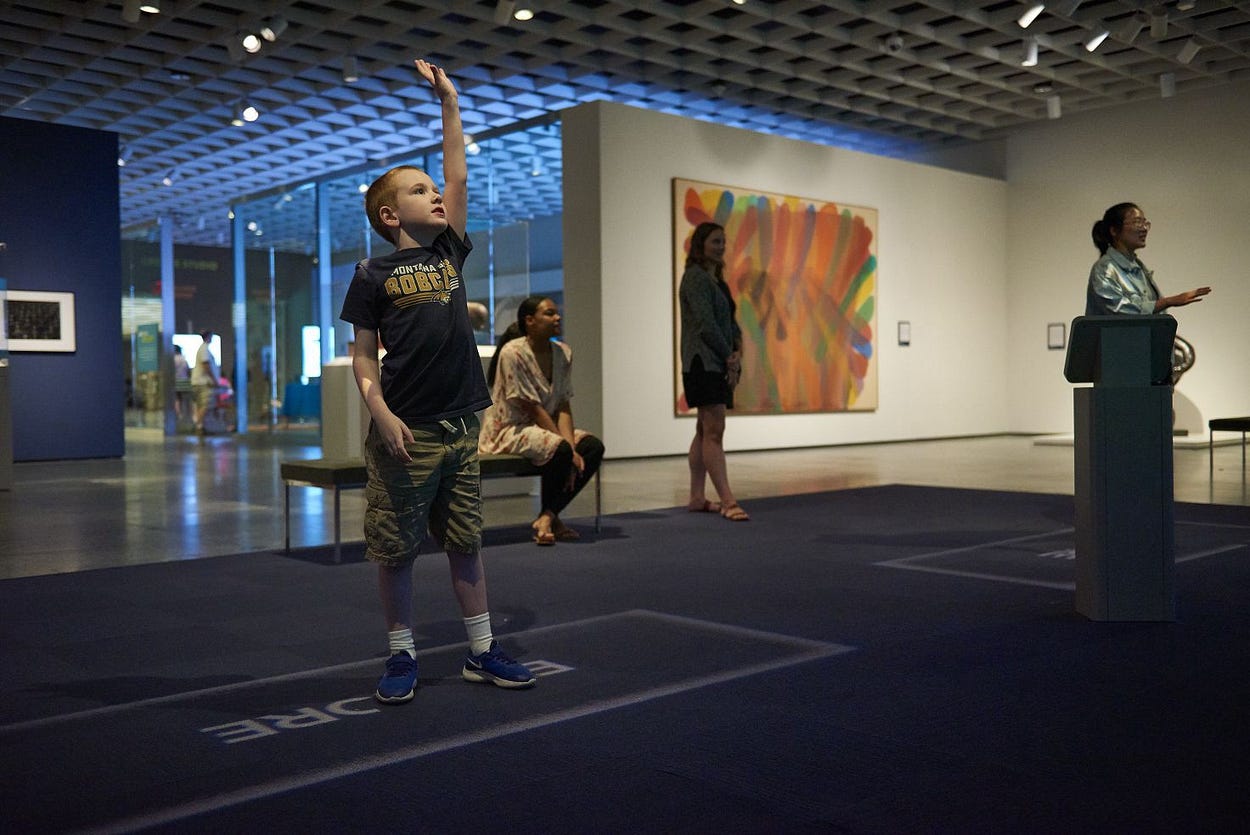Seeing the CMA through a New Lens: Measuring the Impact of ARTLENS Gallery
- Blog Post
- Digital Innovation

Image courtesy Cleveland Museum of Art.
ARTLENS Gallery is an experiential space that uses innovative technology to put the visitor into conversation with masterpieces of art, encouraging engagement on a personal, emotional level. In the essay below, Hannah Ridenour, research manager, discusses the goal of research and evaluation at the CMA, and reviews the ARTLENS Gallery NEA study and tool kit.
Why do you visit an art museum?
How do you feel when you visit an art museum?
How do art museums impact your life?
These are just some of the questions museum evaluators employ in pursuit of supporting outstanding museum experiences for visitors of all ages. The Cleveland Museum of Art’s Department of Research and Evaluation strives to better understand the visitor experience by conducting numerous projects and studies every year.

In 2016 we were fortunate to receive a grant from the National Endowment for the Arts (NEA) to analyze the overall impact of digital interactives on museumgoers. Evaluating something as complex as the benefits of interactive technology in art museums is no small feat, so the department partnered with Rockman et al (opens in a new tab), a research, evaluation, and consulting group based in San Francisco and Bloomington, Indiana, to embark on a two-year study that ended in 2018.
The CMA’s ARTLENS Gallery first opened in 2012 and underwent a major reinstallation in 2017. This interactive space is designed to help visitors look closer, dive deeper, and have fun discovering the museum’s collection. As a space dedicated to using technology to engage visitors with art in new ways, it was the ideal location to undertake our NEA impact study.


The project goals centered around uncovering layers of insights pertaining to a series of interrelated topics: the effect of digital interactives on a visitor’s relationship with the museum and its collection, how certain audiences interact with ARTLENS Gallery, what value the technology brings to visitor engagement, and how to best measure engagement and impact.
The first few months of the project (begun in 2017) involved organizing discussions with CMA staff in the interpretation and digital innovation departments about the goals of ARTLENS Gallery, researching how other museums had attempted to tackle related topics, and assessing the best ways to learn from visitors while meeting the specific objectives of our study. After testing our questions, rating scales, and methodologies, we began our final data-collection phase in late 2017. Thanks to the more than 400 participants who completed pre- and post-visit surveys over three months, we were able to capture and compare their perceptions, motivations, and expectations between when they entered and left the museum. Not all participants chose to include ARTLENS Gallery in their visit, enabling our team to understand not only how ARTLENS Gallery visitors feel about the CMA but also how going to different spaces in the museum changes the visitor experience.


We then began several months of data analysis and reporting. It’s an exciting moment when an assumption is proven in the data, and it was amazing to discover evidence of changing perceptions and thoughts over just a single museum visit, hinting at the impact that is possible over even longer periods of time.
Perhaps the biggest discovery was that participants who spent time in ARTLENS Gallery were able to report greater gains in art understanding and knowledge than those who did not.
Since art museums provide so many different opportunities for learning, we wanted to gauge how a type of experience like ARTLENS Gallery — one not typically expected in an art museum — effects those opportunities. We also were eager to examine if there was a noticeable connection between a visitor’s comfort level in an art museum and their perceived level of knowledge. We were delighted to find that even though ARTLENS Gallery visitors, on average, started their day feeling slightly less comfortable in their sense of art comprehension, visiting ARTLENS Gallery in combination with other areas of the CMA — such as the collection galleries or special exhibitions — led to greater increases in their art understanding and knowledge. The following graphic illustrates this enlightening finding.

Furthermore, ARTLENS Gallery visitors were also more likely to feel entertained as a part of their visit, have fun, and pivot to thinking of art museums as places to expect new experiences. Some effects we measured were even stronger among young adults and those with children who engaged with ARTLENS Gallery. And the majority of ARTLENS Gallery visitors who participated in the study could attribute the following positive outcomes to their time spent in the digital interactive space:
Taking an increased interest in the museum’s collection
Feeling encouraged to look closely at art and notice new things
Being guided to artworks of personal interest
Learning new skills for viewing or interpreting artworks
Through its digital interactives and games, ARTLENS Gallery offers tools to connect with art in personal and unique ways. The newest iteration of ArtLens Exhibition — an experiential space within ARTLENS Gallery that puts the viewer into conversation with masterpieces of art — fittingly examines the theme “What Can Art Be?” by engaging and familiarizing visitors with the CMA’s collection. Whether you have yet to visit the Cleveland Museum of Art or do so often, start your next visit with the ARTLENS Gallery and you’ll see art through a whole new lens.

Using ARTLENS Gallery as a test site, the museum’s NEA impact study was designed for evaluating digital interactives at any art museum, and we hope the metrics we established, the findings the study generated, and the questions it continues to spark will benefit visitors at all museums. The white paper summarizing additional findings from this two-year project, Art Museums and Technology: Developing New Metrics to Measure Visitor Engagement, is available on the CMA website along with a tool kit for museum evaluators to begin studying the larger impact of interactives at their organizations.
This blog is the fourth in a series highlighting the new installation of ArtLens Exhibition. Read part one by Jane Alexander, Chief Digital Information Officer, here, part two by Jennifer DePrizio, Director of Interpretation, and Jim Engelmann, Exhibition Designer, here, part three by Maddie Armitage, Digital Project Manager, and Howard Agriesti, Chief Photographer, here.